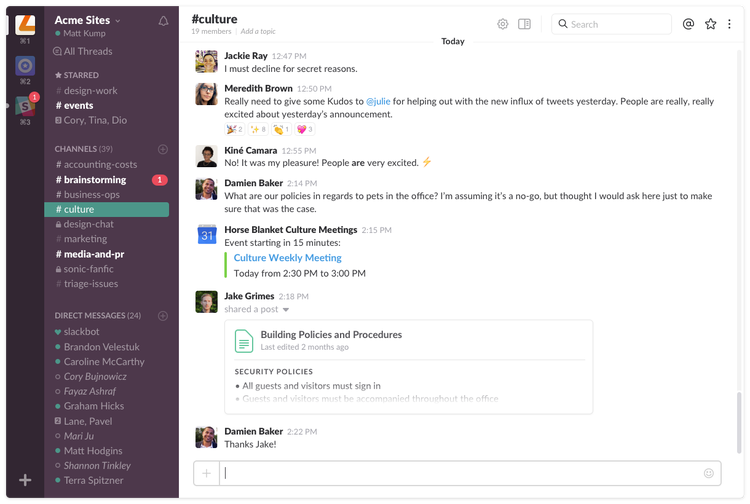Slack Is Working Again After Another Brief Outage

The Slack collaboration service went down late Friday morning for roughly 20 minutes, hampering communications in offices around the globe.
The popular collaboration platform posted the brief note on its status page at 11:26 a.m. Pacific: "We're investigating problems with connectivity at this time. We're sorry for the interruption and will keep you posted as soon as we have an update."
Just past 11:45, the company posted on Twitter, "We're all clear across the board and everyone should be able to connect to their workspace again. If you're seeing any continued issues, please don't hesitate to reach out."
We're out of the woods now for the connectivity issues affecting all workspaces. We appreciate your patience while we worked to get things back to normal. https://t.co/i1HpuZI3Q4
— Slack (@SlackHQ) September 7, 2018
It updated its status page to say all is normal at 11:54 a.m. PT.
[Related: 5 Companies That Had A Rough Week]
The last major Slack outage came in June, when 8 million users lost service for more than three hours because of a problem Slack identified as "connectivity issues." There was also a brief outage Aug. 28.
As it did during the downtime in June, Slack kept a dialogue with users on Twitter, asking them to stay patient as it worked on the problem.
Even so, Slack users took to Twitter to vent about the latest outage.
Slack, which bills itself as a system that you can run your entire business on, seems to have a high number of outages lately — at least 3 outages in the last 4 weeks, per its website. https://t.co/2x6eNIBeWS
— Steve Kopack (@SteveKopack) September 6, 2018
Obligatory “time to go home” Friday afternoon Slack outage tweet pic.twitter.com/tFWyUvSnyl
— Jeff Kelley (@SlaunchaMan) September 7, 2018
Conspiracy theory: #Slack schedules intentional outages to remind us just how much we need them.
— Ellen Burr (@elleburr) September 7, 2018
The Slack outage comes a few days after Microsoft Azure and Office 365 services went down due to a lightning strike at its San Antonio data center, which impacted cooling systems and triggered a managed shutdown.